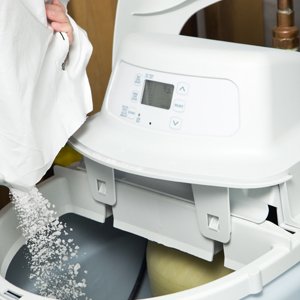Great water-saving tips to help you conserve water and lower your water bill
For approximately $10-$20, the average homeowner can install two low-flow shower heads, install low-flow aerators on faucets and repair dripping faucets and leaking toilets. This could save 10,000-25,000 gallons per year for a family of four, and would pay for itself in less than a year! Even more could be saved if responsible outdoor water conservation is practiced for the lawn and garden.
Recommendations to reduce landscape irrigation, a major contributor to high water bills.
In the BathroomWater-efficient fixtures save you a lot of water and green.
In the KitchenSmall changes to your kitchen routines can save water and keep grease out of our sewers.
In the LaundryEven if you have a efficient washing machine follow these tips to save water and energy.
For Appliances and PlumbingThere are multiple home fixtures that can drain water straight to the sewer without a trace.
Outdoors
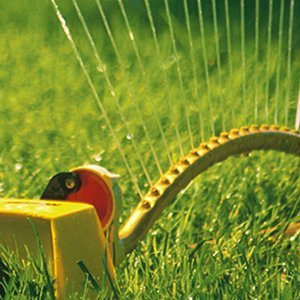
- Water only when needed. Look at the grass, feel the soil, or use a soil moisture meter to determine when to water.
- Do not over-water. Water needs vary greatly by season, grass species and amount of shade, so keeping the same settings year-round will result in over-watering. As a general rule, three-fourths of an inch of water per week on St. Augustine or Zoysia grasses that are in full sun is sufficient for the summer. In the shade, these species only need one-half of an inch of water per week. Bermuda grass and buffalo grass, both of which can only grow in full sun, require one-half of an inch per week. In the fall, spring and winter, these recommendations can be reduced or eliminated, depending on the weather.
- Water lawns early in the morning during the hotter summer months. Otherwise, much of the water used can simply evaporate. Watering by hand-held hose or with a 5-gallon bucket is allowed any time, but water waste is prohibited at all times. Water waste occurs when: watering outside of approved time periods and allowing water to run onto the pavement.
- To avoid excessive evaporation, use a sprinkler that produces large drops of water, rather than a fine mist. Sprinklers that send droplets out on a low angle also help control evaporation.
- Set automatic sprinkler systems to provide thorough but infrequent watering. Pressure-regulating devices should be set to design specifications. Rain shut-off devices can prevent watering in the rain.
- Use drip-irrigation systems for bedded plants, trees and shrubs, or turn the flat, green soaking hoses upside down so the holes are on the bottom. This will help prevent evaporation.
- Forget about watering the streets, sidewalks or driveways. They will never grow a thing.
In the Bathroom
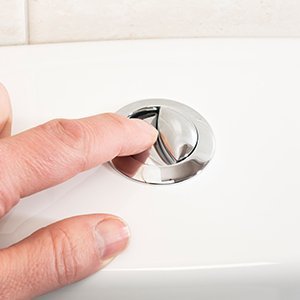
- Take short showers and install a cut-off valve, or turn the water off while washing and back on again to rinse.
- Take a shower versus a bath. Showers with high-efficiency showerheads often use less water than taking a bath.
- Reduce the level of the water being used in a bathtub by one or two inches if a shower is not available.
- When building a new home or remodeling a bathroom, install a new, dual-flush toilet that uses only 0.8 or 1.6 gallons per flush.
- Test toilets for leaks. Add a few drops of food coloring or a dye tablet to the water in the tank, but do not flush the toilet. Watch to see if the coloring appears in the bowl with a few minutes. If it does, the toilet has a silent leak that needs to be repaired.
- Never use the toilet to dispose of cleansing tissues, cigarette butts or other trash. This wastes a great deal of water and also places an unnecessary load on the sewage treatment plant or septic tank.
- Do not use hot water when cold will do. Water and energy can be saved by washing hands with soap and cold water. Hot water should be added only when hands are especially dirty.
- When brushing teeth, turn the water off until it is time to rinse.
- Do not let the water run when washing hands. Water should be turned off while washing and scrubbing and be turned on again to rinse. A cut-off valve may be installed on the faucet.
- When shaving, fill the lavatory basin with hot water instead of letting the water run continuously.
- Install faucet aerators to reduce water consumption.
- Install a low-flow shower head that limits the flow from the shower to less than 3 gallons per minute.
In the Kitchen
- Scrape the dishes clean instead of rinsing them before washing. There is no need to rinse unless they are heavily soiled.
- Use a pan of water (or place a stopper in the sink) for washing and rinsing pots, pans, dishes and cooking implements rather than turning on the water faucet each time a rinse is needed.
- Never run the dishwasher without a full load. This practice will save water, energy, detergent and money.
- Use the garbage disposal sparingly or start a compost pile.
- Keep a container of drinking water in the refrigerator. Running water from the tap until it is cool is wasteful.
- Use a small pan of cold water when cleaning vegetables rather than letting the water run over them.
- Use only a little water in the pot and put a lid on it for cooking most food. Not only does this method save water, but food is more nutritious since vitamins and minerals are not poured down the drain with the extra cooking water.
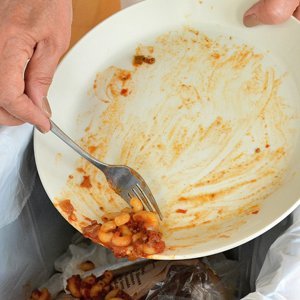
In the Laundry
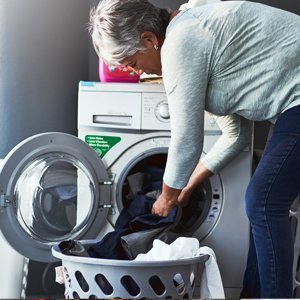
- Wash only a full load when using an automatic washing machine (32-59 gallons are required per load).
- Whenever possible, use the lowest water-level setting for light or partial loads.
- Use cold water as often as possible to save energy and to conserve the hot water for uses that cold water cannot serve. (This is also better for clothing made of today’s synthetic fabrics.)
For Appliances and Plumbing
- Check water requirements of various models and brands when considering purchasing any new appliances. Some use less water than others.
- Check all water line connections and faucets for leaks. A slow drip can waste as much as 170 gallons of water each day, or 5,000 gallons per month and will add to the water bill.
- Learn to repair faucets so that drips can be corrected promptly. It is easy to do, costs very little and can mean a substantial savings in plumbing and water bills.
- Check for hidden water leakage such as a leak between the water meter and the house. To check, turn off all indoor and outdoor faucets and water-using appliances. The water meter should be read at 10- to 20-minute intervals. If it continues to run or turn, a leak probably exists and needs to be located and repaired.
- Insulate all hot water pipes to reduce the delays (and wasted water) experienced while waiting for the water to become hot.
- Be sure the water heater thermostat is not set too high. Extremely hot settings waste water and energy because the water often has to be cooled with cold water before it can be used.
- Use a moisture meter to determine when house plants need water. More plants die from over-watering than from being dry.
